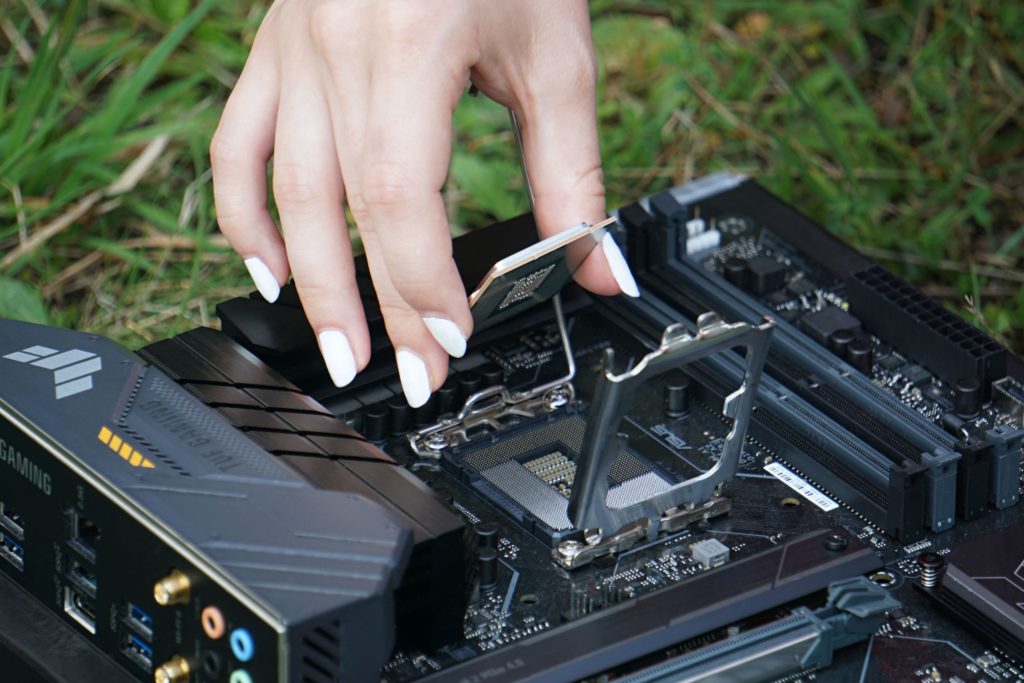Giveaway rules and prizes
It’s been quite a while since you had a chance to win something, so let’s make up for it a little bit now. With a three-in-one package where one of you gets half of a working PC – Intel Core i5-12400 processor with integrated graphics, Asus TUF Gaming B660 Plus WiFi D4 motherboard and SilentiumPC Spartan 5 cooler. These are all attractive components that have been awarded the Smart buy! award in our tests, which we don’t give out “just like that”.
The prizes
We’ve put together the main and only prize from three components, which when you add memory, storage to suit your needs, a case and a power supply, you can enjoy a new, well-tuned PC build.
The basis of the contribution from us is a Intel Core i5 class processor, model 12400. Stepping H0, a variant with a smaller, natively hexa-core chip without the deactivated parts that C0 has. You know from our benchmark tests that stepping H0 is more power efficient than C0 at lower loads (the biggest percentage difference is in idle), but because of the smaller surface area of the package, it dissipates heat worse, so it gets a little hotter for the same power draw. Combined with the SilentiumPC Spartan 5 cooler, however, you will have no shortage of cooling power, and the processor will be able to run stable and safely at the threshold of audibility under full load. We tested this cooler on the Core i5-12400 variant with the “small” chip (H0).
You can see the results not only of the SilentiumPC Spartan 5, but also performance tests of the Intel Core i5-12400 in our analyses. We have tested in detail the third part of the puzzle – the Asus TUF Gaming B660 Plus WiFi D4 motherboard as well. It does have a relatively weaker, less efficient power delivery for the processor, which heats up relatively more, but with a processor with a lower power draw (which is also the case with the Core i5-12400), none of these potential negatives are significantly manifested. The difference compared to more efficient boards is minimal in both power draw and VRM temperatures.
So now you know the three components we have prepared for one of you, and now how to get to them. There are two ways you can enter the giveaway.
… and the rules
One way you can enter the draw is by sending someone or sharing one of our articles somewhere. And it doesn’t matter if you refer a friend to it by phone or if you know of a public topic on the Internet where it would be useful. The important thing is first of all that it enriches someone and is not annoying (and therefore counterproductive).
When you contribute something somewhere (for example, to a topic forum), we will be happy to receive a link to the specific place and we will be glad if you send it to the editorial email below. If you have referred a friend to an HWC article who is choosing a suitable fan, for example, just drop us a brief note so that we can keep a record of you. Something simple like “my friend Peter complained to me about whirring fans in his case that he wanted to replace, but he couldn’t figure out what to do, so I referred him to HWCooling’s tests” will suffice. Nothing more is needed.
Spreading awareness of HWC is key to our development, but we won’t force you to do it. If you don’t find a suitable opportunity, it doesn’t matter at all and you can just tell us why you visit HWCooling. Accordingly, we will be able to reinforce the topics in which you show more interest. You can also write to us about where you see gaps (and where you see room for improvement), so that we know what to work on in this area as well.
Send your messages to info@hwcooling.net with the subject Giveaway, summer 2022. In case you would like to help with your activity, to comment on something, but for some reason you are not interested in these components, please add the note “not competing” in the subject line. The deadline is 5 September 2022 (23:59 CEST). The winner will be announced a day later. You can join from all corners of the world, we have no geo-restrictions. Thank you all for your participation!
English translation and edit by Jozef Dudáš
- Contents
- Giveaway rules and prizes












